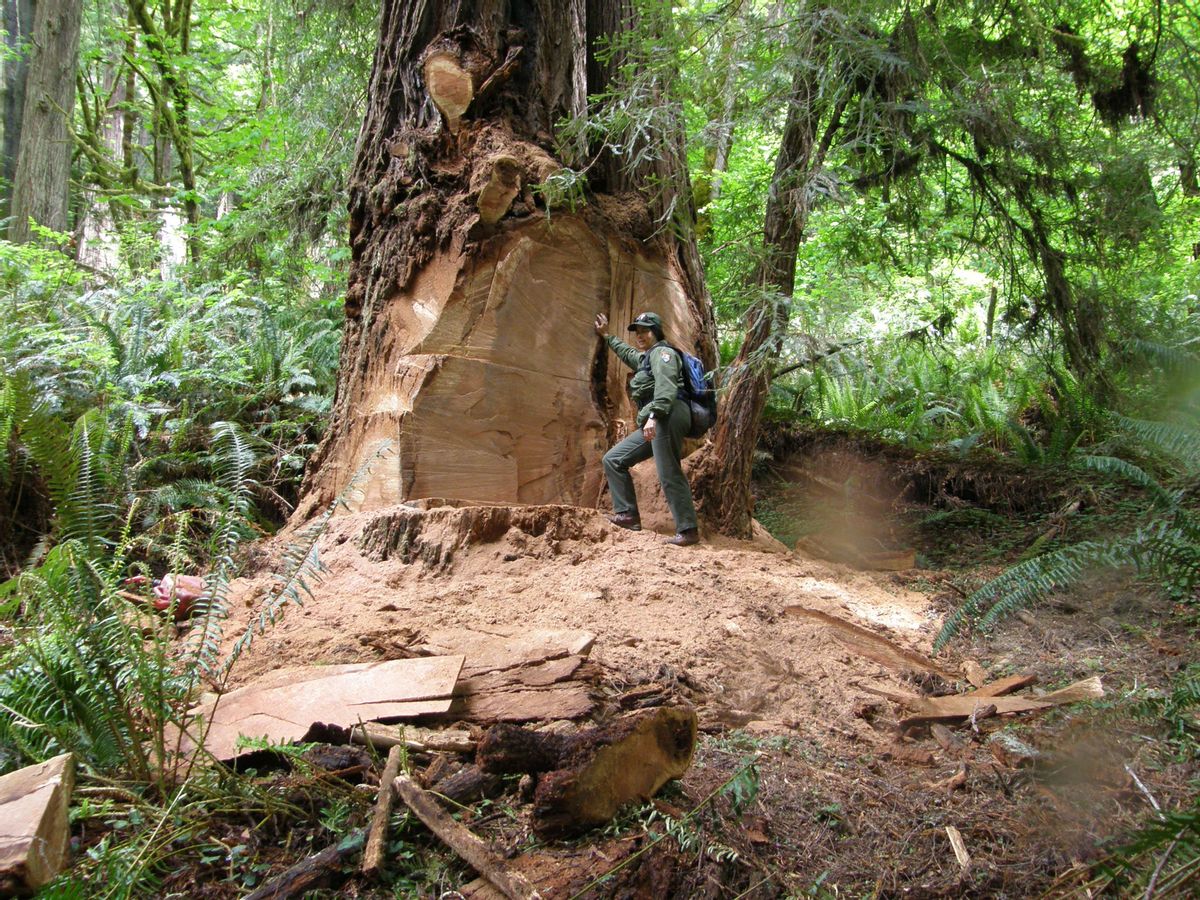Rank California's redwoods among the rhinos and elephants: a growing poaching crisis threatens the already endangered trees. And according to the New York Times, officials at Redwood National and State Parks are dealing with a lot worse than the likes of Sean Parker. The thieves, driven by "a sluggish local economy and expensive methamphetamine habits," brutally attacked 18 trees in the past year. Their target: the trees' burls, "gnarly protrusions ... that are prized for their intricately patterned wood."
The Times reports on the escalating crisis:
Last year, a redwood estimated to be 400 years old was felled by thieves who wanted access to a 500-pound burl 60 feet up. It was the first time an entire tree was cut down for a burl, said Brett A. Silver, the state park’s supervising ranger.
The burl was so massive that the thieves wound up dragging it behind their vehicle, leaving a trail of skid marks. The trail led rangers two and a half miles to the Redwood Highway — U.S. 101. They found the burl stashed beneath an overpass for safekeeping.
“How many do we have that we haven’t found?” Mr. Silver said of the poached trees. “It’s not just a property crime. It’s a legacy, like hacking up a church.”
This 132,000-acre park, a Unesco World Heritage site, is the repository of a significant portion of the planet’s remaining virgin coast redwoods, which were largely logged by timber companies. The trees thrive only along a narrow, fog-shrouded ribbon of land between the California-Oregon border and Big Sur. The burl wood, with its complex, swirling patterns, is the result of bud tissue that has not sprouted; the park describes it as “a storage compartment for the genetic code of the parent tree.”
Old-growth coast redwoods are among the earth’s most tenacious organisms, some living 2,000 years or more. Removing a burl cuts into a tree’s living cambium layer, which can weaken it and make it vulnerable to insects and disease.
In an attempt to curb the rampant destruction, park rangers last month starting closing a popular, eight-mile drive through old-growth forests at night. Investigators, meanwhile, are on the prowl at redwoods gift shops, and are urging consumers who purchase burl to make the extra effort to try to determine its source. But identifying illegally acquired burls is a challenge, as is convincing thieves to leave the trees alone. “People still feel they have a right to extract from the forest to make a living,” Paul Gallegos, the Humboldt County district attorney told the Times. “But parks are a state and national resource. These trees belong to the people of the United States of America, so they are in fact stealing from them.”



Shares